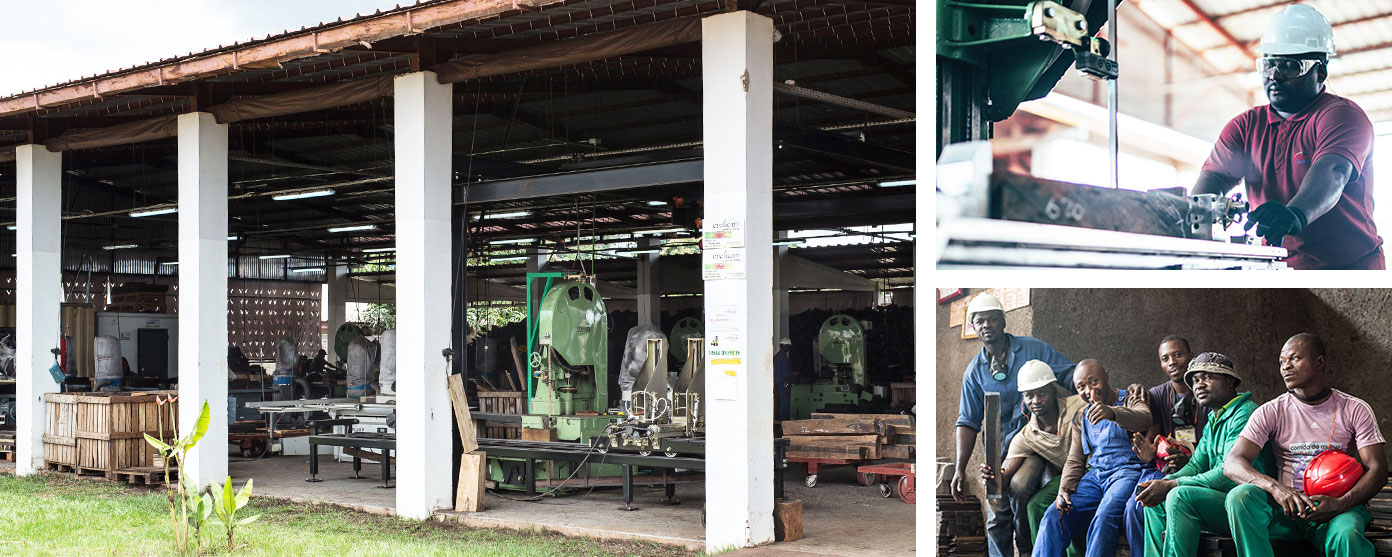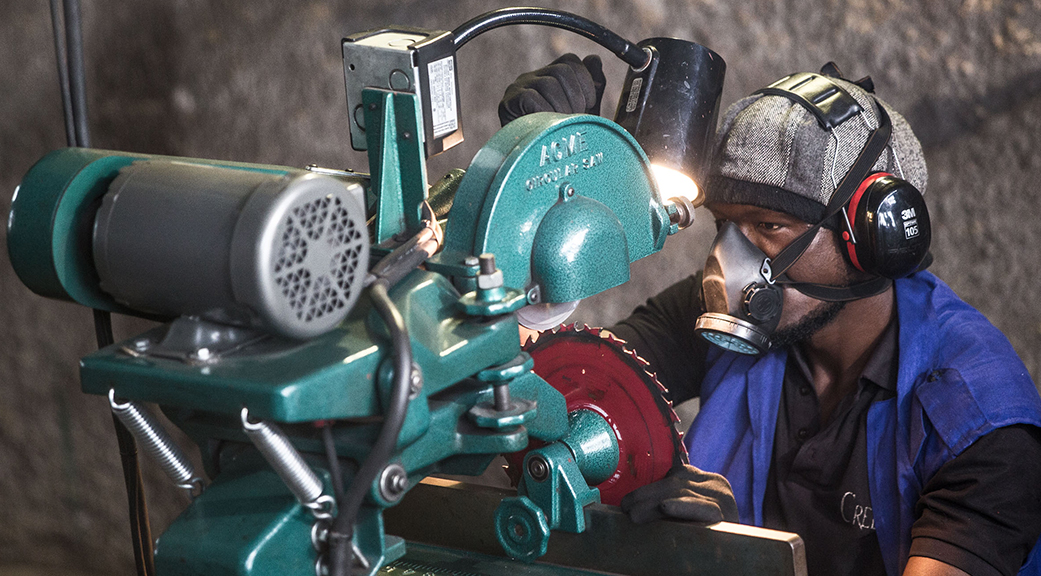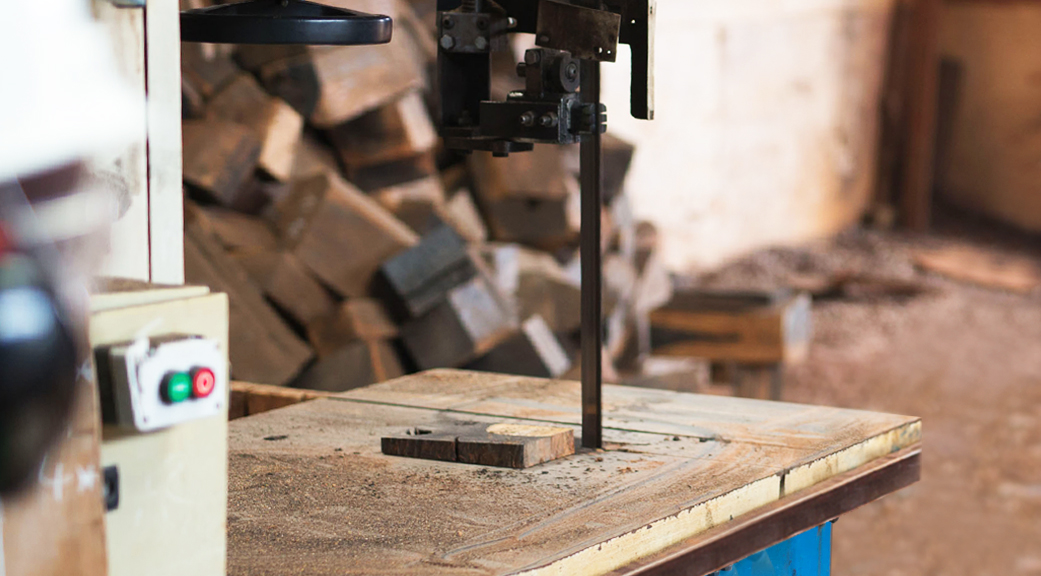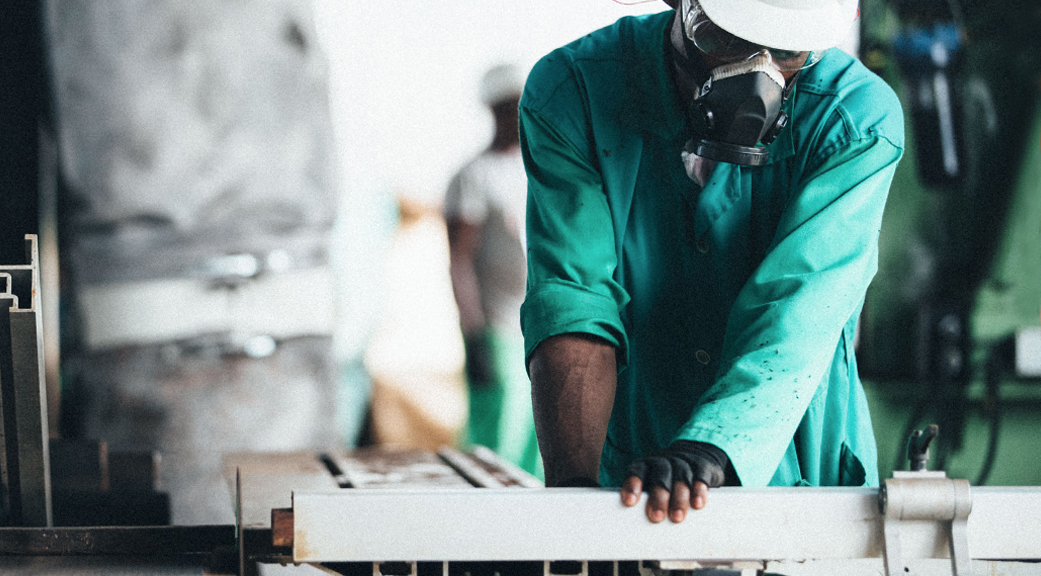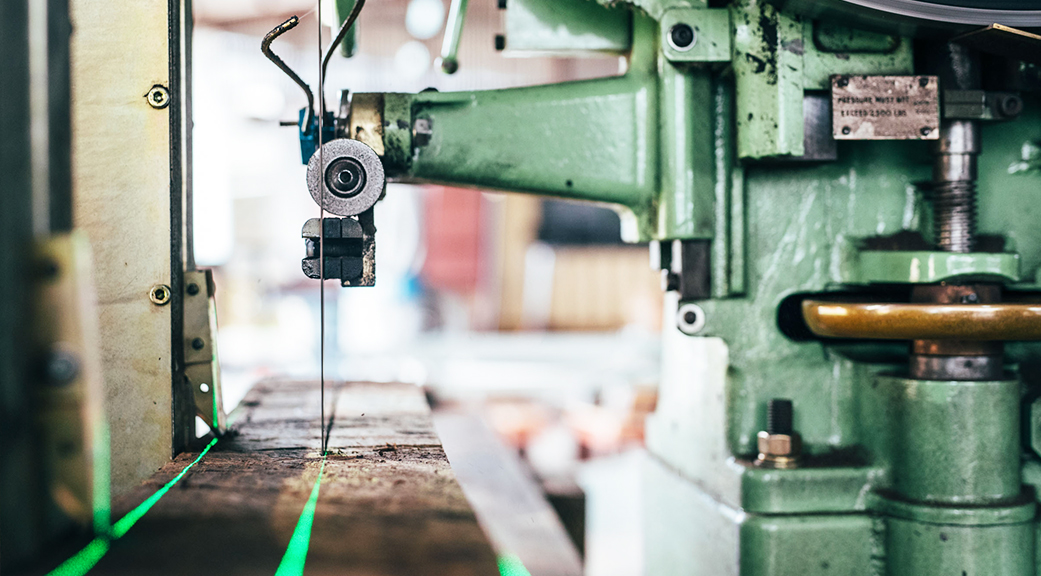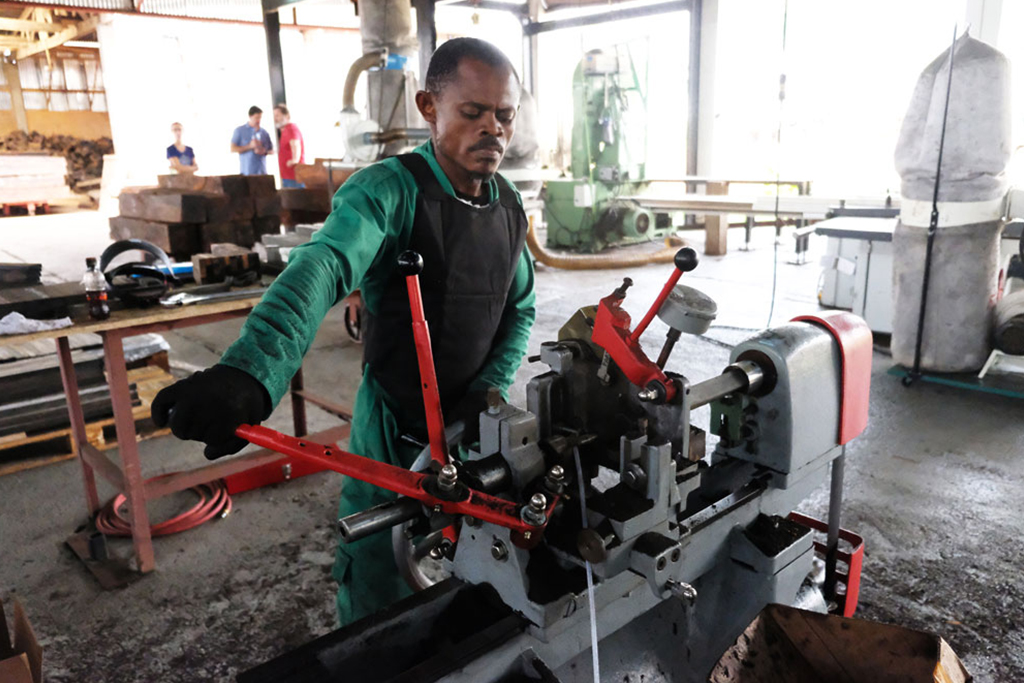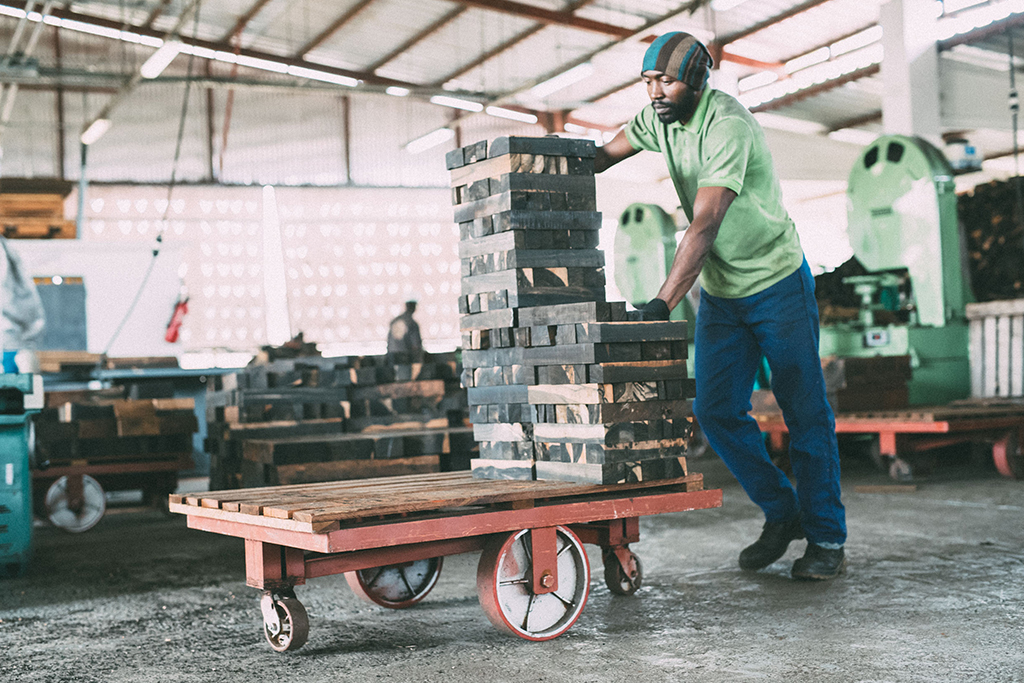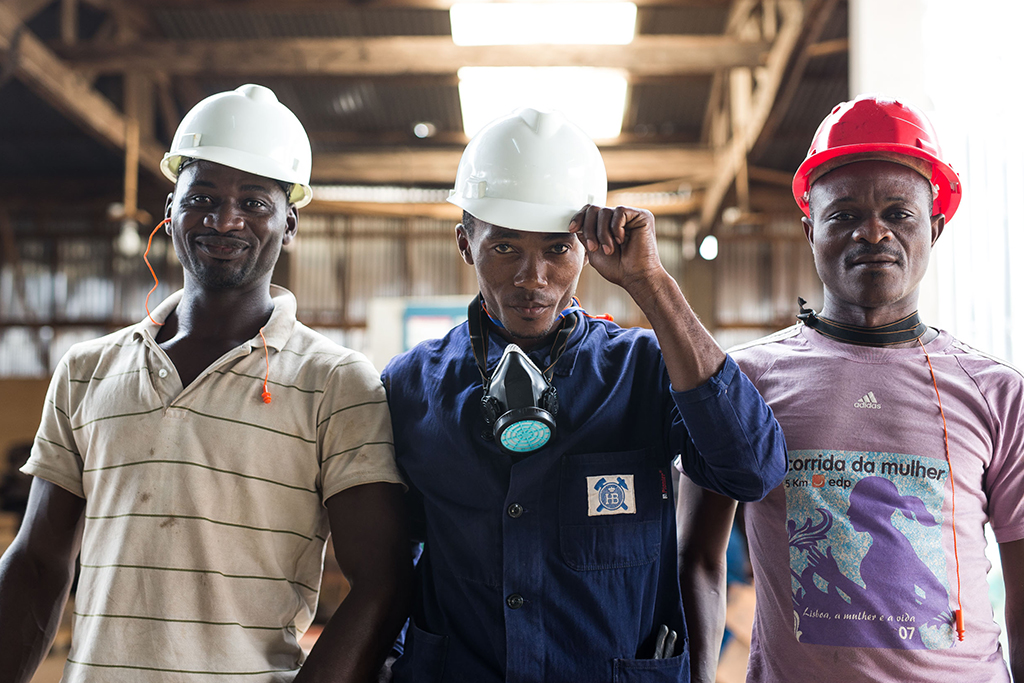— Value-Added Processing —
At Crelicam, we continually strive to bring more value-added processing to Cameroon, transferring appropriate technology and skills, and creating jobs. This is important because historically, the dominant business model in Africa has been based on exporting raw resources for value-added processing in other countries, and we feel that Cameroonians deserve to reap the benefits of adding value to native natural resources such as ebony. Since our transition to new ownership in 2011, the Crelicam mill has undergone a remarkable transformation into a more advanced wood-processing facility. With new machinery, improved building infrastructure, and a skilled workforce, Crelicam has increased its capacity to produce value-added ebony parts in Cameroon. Our sawyers are equipped to cut and process wood with greater precision to produce high-quality parts.
01 / Saw Equipment
Our equipment base has rarely if ever been seen in Cameroon and continues to grow to add dependability and capability to our manufacturing. Band saws and table saws are the backbone of the mill, so we gave much thought to these essentials.
02 / Band Saws
We chose Stenner 36-inch resaws because of their relatively compact size and incredible strength and durability. We needed machines that were built during a simpler, more mechanical era, so we acquired eight vintage Stenners originally built between the 1960s and 1980s in the used market. We took them down to their castings and rebuilt them into new condition, making each one an exact replica of the others. Standardization is key to any production, yet even more critical in Cameroon, where parts are scarce or do not exist. Here, this simplifies both the stocking of spare parts and the training of sawyers.
03 / Table Saws
Our table saws are from the same or slightly older era as the resaws and underwent the same detailed restoration process. All machines, whether band saws or table saws, share the same starting and electrical controls in order to ensure a useful stock of shared repair parts.
04 / Head Rig Saw
Our head rig saw, responsible for the first cut in the sawmill, was custom-built by the Taylor Guitars tooling department using one of the eight Stenners.
05 / Additional Machinery
We have gradually added other machines to the mill, including heavy-duty straight line rip saws, planers, jointers, thickness sanders and dust collection. Our specialty equipment now includes specialized lathes to produce goods from ebony pieces that don’t qualify for musical instruments, plus dry kilns and other fine woodworking equipment as we train our staff to add value by making finished or semi-finished manufactured goods.
We have an ethical responsibility to invest in the training and well-being of our employees to give them a higher stake in the industry they help support. Crelicam has become a thriving workplace and one of the most desirable places to work in the community.
Our investment in our employees includes:
-
- Technical training with teams from Madinter and Taylor, who regularly visit Crelicam to share their expertise in everything from milling to finance and administration
- Improved wages, along with health care and educational benefits for employees and their families
- A free cooked lunch in the onsite kitchen
- The creation of a fresh water well that supplies both the factory and the local community with clean, potable water
- Improved tools, training and technology for forest contractors, including safety gear and GPS devices to register the location of extracted trees for compliance and chain-of-custody transparency



